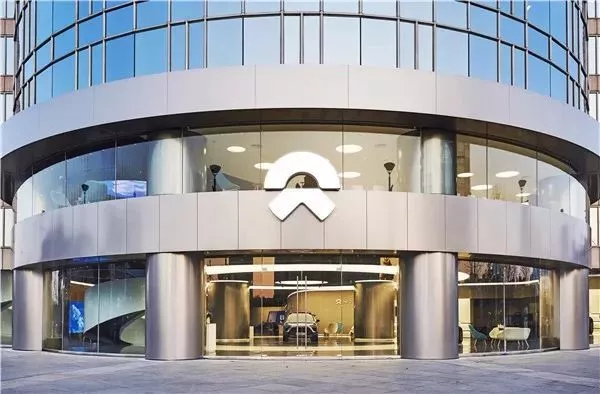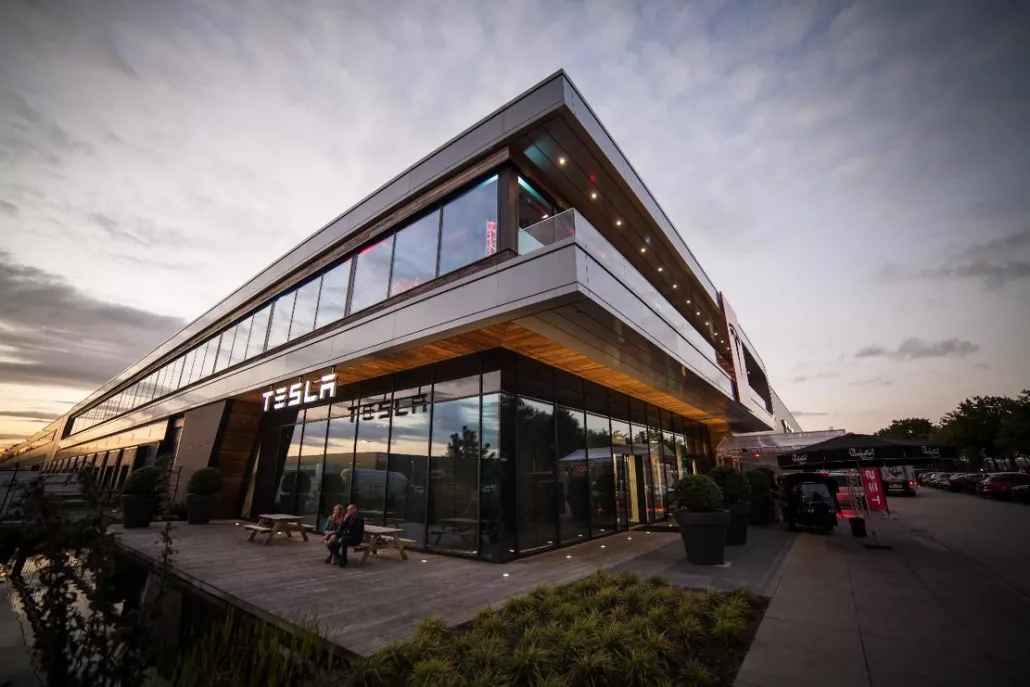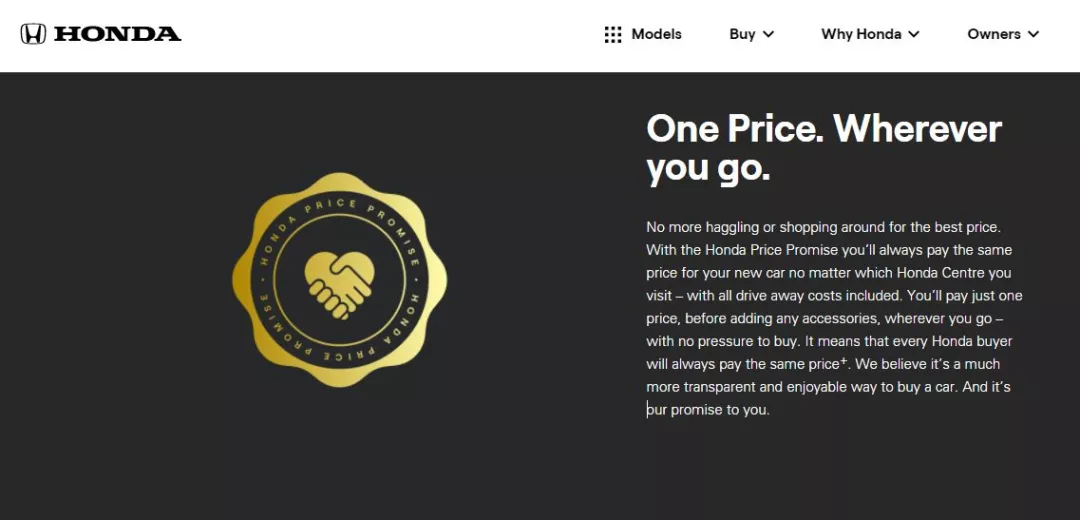*This article is reproduced from the Autocarweekly public account.
Author: Du Debiao
I don’t really believe in “couple look”, and even if it exists, I don’t want it to happen. This feeling was basically confirmed when I watched “The Arrival”. Why should I want my beautiful wife to look like me?
But I think this is a description of a phenomenon. For example, when two phenomena cross, they will (inadvertently) learn from each other’s strengths and become similar.
Nowadays, the sales channels of new and old forces in the automobile industry are showing this trend of mutual imitation, although the reasons are still uncertain.
First of all, there were two pieces of news about channels a while ago: one was that a certain vertical automobile media reported that 4,000 authorized dealers withdrew from the network last year, while only 2,000 new stores were added, which triggered public opinion to discuss whether the “4S Model” is reasonable at its root; the other was that Tesla was reported to be intentionally reducing the number of experience stores and building traditional 4S network-like stores.
According to reports, Tesla did not deny positively, only saying that public opinion was “generalizing from one or two instances”, but the intention to “change” seems to be tacitly admitted, so it reached a consensus with the traditional forces.
First, let’s talk about the first question, whether the 4S model should or should not disappear.
Talking about traditional channels starting from Australia
In fact, there is a fuse for the “end of the 4S model”, which is that Honda cancelled its authorized dealers in Australia. From this, public opinion infers the rationality and possibility of domestic dealers’ transformation.
This news was found online. “It is said that” Honda dealers in Australia no longer sell new cars, and the official website has unified prices. They have changed to the direct sales model, and the products in the market are only used for display.
Familiar plot.
We cannot verify this news with Honda headquarters, but the statistics can prove something. In 2020, the total sales volume of the Australian automotive market was about 917,000 vehicles. Honda’s sales volume in Australia did not enter the top ten last year, and the annual sales volume of the tenth-ranked Mercedes was 29,000 vehicles.
It is no coincidence that after Honda announced the cancellation of the 4S model in Australia, Mercedes immediately announced that it would follow suit.
The scale is too small and the contribution is too little.

The concept of 920,000 annual sales in Australia is: roughly equivalent to the annual volume of Dongfeng Honda, with a population of 24 million, which is equivalent to the population size of Shanghai. Under such circumstances, if your sales scale is comparable to that of PSA in China, and coupled with the Australian dollar remaining strong in a situation where there is no potential to be expected and no conditions to rely on, then adopting the strategy of “staying in school and observing” is reasonable.
However, observing the overall changes in the automobile industry channels from a small perspective may not be reasonable.Even Toyota, the leading enterprise in Australia, closed its local factory in 2017, which means importing is more profitable than localized production.
The local adaptations for Honda in Australia are obvious, but the motivation behind it cannot be speculated from the results. It is uncertain whether Honda is imitating the direct sales model of new powers or not, and it is premature to advocate the superiority of direct sales model based on this.
Honda’s approach in Australia is similar to last year’s phenomenon of withdraw in the domestic car market, which is largely due to the result of the elimination of the weakest. It is difficult to determine which brand the 4000 withdrawn dealers belong to, and their reasons for withdrawal are different. However, from the frequency of appearances, brands with sales volume below mid-range, such as Zotye, Bisu, Lifan, Qoros, and DS, have higher exposure.
I also agree with the interpretation of some self-media for the leading dealership groups, such as Guanghui and Zhongsheng, whose benefits come from the deep integration with luxury brands, particularly BBA and Japanese brands.
This demonstrates that as long as the correct choice is made, money can still be made, and the 4S model has not yet reached a dead end (according to the report of the China Automobile Dealers Association, the proportion of loss decreased to 30.4% in the first half of the year). But I have not forgotten today’s hidden theme, that is, to explore whether the superiority of the direct sales model is suitable for traditional manufacturers.
This topic can be started with the profit source of 4S stores, which may explain their existence.
Does the after-sales profit determine the channel structure?
Based on my personal experience and observations at a certain BMW 4S store in Beijing’s Fourth Ring Road.
After a car accident repair, the store invited me three times by phone to do a free inspection or bring a discount maintenance package.
I knew the trick, so after spending around RMB 3,000 for the 2nd maintenance, I decisively chose the “wild store” in Beijing Xiguo Mao.
I roughly remember the maintenance projects opened by the 4S store during the 2nd maintenance, including cleaning the throttle body, chassis maintenance, engine cleaning, etc.
There is a concept to be clarified here: I believe that the 4S promises above will definitely be fulfilled, so there is no fraud.
Therefore, my personal dispute with the 4S store is whether these projects are necessary. This standard is not universal, and everyone has their own opinions.
For example, if you go to wash your car, one option is to spend RMB 100 for a thorough cleaning, including removing even the tree gum stuck on the body in summer without leaving any trace; the other option is a fast food combo for RMB 35, which can basically make the car presentable as long as you don’t scrutinize it.You can’t say that a $100 premium car wash is ripping you off; you can only say that you don’t have that high of a requirement.
Given the fierce price war in the car market today, the only outlying brand daring enough to not reduce prices is Lexus. If there is another brand that dares to raise or maintain the price, it is deemed as “disrespectful” to the Chinese market.
Therefore, I believe that the profit margin for selling cars in general is not large, and the main profit comes from after-sales service and financial credit. Based on my personal experience, if you choose the type of small repair shops I mentioned, you can basically get a maintenance under 600 RMB each time, while if you go to a 4S shop, doubling that amount is probably the minimum.
Another phenomenon is that the BMW store west of the Fourth Ring Road reserves almost four-fifths of its space for customer rest, negotiation, and after-sales reception areas, not counting the repair shop. Only about one-fifth of the space is reserved for display cars in the main hall.
The implication is that the display of vehicles and image are played down, which is necessary but not critical, at least not requiring too many models or colors. There is a subjective element to this, but the gap is still very obvious.
If after-sales service is a major profit driver, it indicates that some car owners are dependent on 4S stores, especially for luxury brands.
This is different from the new forces that adopt a direct sales model.
As Tesla’s official website clearly states…by simplifying its structure and requiring nearly no maintenance, it can even conduct remote diagnosis and repair. Therefore, Tesla only needs delivery centers, some maintenance sites, and a few experience stores, all under the control of the parent company.
However, this does not mean that traditional companies cannot adopt a direct sales model. In theory, they can still use the official website ordering method to enhance car buying convenience while unifying and “transparentizing” prices.
It seems like this “apparently” is a benefit.
Are you happy when bargaining is gone?
This part of the passage is probably the funniest.
Many online articles praise the superiority of Tesla’s direct sales model, and transparent pricing is easy to understand, but it is difficult to say how much cost is saved, or whether there is any cost saving.
For example, people will say on the one hand that by leaving the traditional authorized dealer model, Tesla can sell cars at a “factory price” without having dealers add another layer of pricing; on the other hand, they will say that the experience store is a heavy asset project, and there are cost risks.
Because these experience stores are using Tesla’s own money, including delivery centers and after-sales service points. Some people also mentioned that the annual rent of NIO’s experience store in Wangfujing, Beijing is around 70 to 80 million RMB, which is of course a cost. If this cost is not absorbed by the car price, there doesn’t seem to be any other way.
Certainly, the reasonings behind the financial statements of Tesla and NIO will be completely understood as the form evolves. A rough inference is that, with the increase in scale, the cost risk and pressure brought by heavy asset projects like experience centers will become higher and higher. As a result, Tesla may choose to shift to some extent, such as opening city showrooms or working with agents who have sales rights but no bargaining power (HeKr has already tried it).
The bargaining power is the most interesting part of this, and it is also one of the biggest differences that I think exist between direct sales and authorized sales models, at least one of them.
New forces often claim that the direct sales model brings price transparency and uniformity. The word “uniformity” indicates that the inconsistent prices of cars in different regions that harmed the interests of some consumers no longer exist.
But I believe it has also brought benefits to many consumers. Friends who have taken advantage of the benefits in price wars are numerous to the extent that the awareness is deep-rooted to consider it abnormal to have no room for bargaining.
The so-called inconsistency in the past was determined by the market price together with regional business policies, purchasing power, and car purchasing policies, such as the price of cars in limited purchase cities like Beijing was lower than that in non-limited purchase areas.
Therefore, it reflects a psychological phenomenon that the market does not suffer from scarcity but unfair distribution. Would those benefiting stakeholders welcome to retrieve the bargaining power of price elasticity?
But in this case, benefits determine one’s mindset.

In conclusion
The following conclusions can be drawn:
-
As long as gasoline-powered or hybrid products are still for sale, the brand’s after-sales service network must exist, especially for luxury brands.
-
Traditional brands, especially popular ones, have a large scale, and the distribution system (dealer system) is a way of sharing risks. This seems to coincide with Tesla, which is gradually expanding its scale.
-
In the process of global monopolization, the first transformation of 4S shops is to merge into large dealer groups. Perhaps more individual stores will emerge to play a balancing role, but the physical form is necessary.
-
Musk said: Only start-ups can replicate us. It also proves that traditional car companies cannot easily replicate direct sales models, not because of thinking mode methods, but judgments based on size and settled form.
-
If one day the car world becomes a purely electric world, just like a computer world, then 4S shops may not be necessary, or at least not many, because it may be possible to find a computer repair technician to repair cars by analogy. If autonomous driving makes this world run in order in calculation, there may be no more car accidents. At that time, the rise and fall of 4S may be an historical selection.
This article is a translation by ChatGPT of a Chinese report from 42HOW. If you have any questions about it, please email bd@42how.com.
